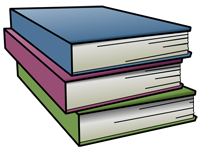-
Parent Resources By Unit
Below is a brief description of the topics for each unit. Links to videos are provided to help you understand instructional strategies being taught in class.
Module/Unit 1: Numbers to 10
Kindergarten starts out with solidifying the meaning of numbers to 10 with a focus on embedded numbers and relationships to 5 using fingers, cubes, drawings, 5 groups and the Rekenrek. Students then investigate patterns of “1 more” and “1 less” using models such as the number stairs (see picture). Because fluency with addition and subtraction within 5 is a Kindergarten goal, addition within 5 is begun in Module 1 as another representation of the decomposition of numbers.
Modeling with a Ten Frame
A Parent's Guide to a Rekenrek
How to Make a Rekenrek at Home
Zero the Hero
Math Magic FingersModule/Unit 2: Two-Dimensional and Three-Dimensional Shapes
Students learn to identify and describe squares, circles, triangles, rectangles, hexagons, cubes, cones, cylinders and spheres. During this module students also practice their fluency with numbers to 10.
Shape Hunt
Describing Relative PositionsModule/Unit 3:Measurement - Comparison of Length, Weight, Capacity, and Numbers to 10
Students begin to experiment with comparison of length, weight and capacity. Students first learn to identify the attribute being compared, moving away from non-specific language such as “bigger” to “longer than,” “heavier than,” or “more than.” Comparison begins with developing the meaning of the word “than” in the context of “taller than,” “shorter than,” “heavier than,” “longer than,” etc. The terms “more” and “less” become increasingly abstract later in Kindergarten. “7 is 2 more than 5” is more abstract than “Jim is taller than John.”
Module/Unit 4: Number Pairs, Addition and Subtraction to 10
Number comparison leads to a further study of embedded numbers (e.g., “3 is less than 7” leads to, “3 and 4 make 7,” and 3 + 4 = 7,). “1 more, 2 more, 3 more” lead into addition (+1, +2, +3). Students now represent stories with blocks, drawings, and equations.
Number Partners of Ten
Number Bonds
Number Bonds of 10 Using Objects
Use Number Bonds to Show SubtractionModule/Unit 5:Numbers 10–20 and Counting to 100
Students apply their skill with and understanding of numbers within 10 to teen numbers, which are decomposed as “10 ones and some ones.” For example, “12 is 2 more than 10.” The number 10 is special; it is the anchor that will eventually become the “ten” unit in the place value system in Grade 1.
Counting On
Hide Zero Cards
Student explains how to use Ten Frames & Hide Zero CardsModule/Unit 6:Analyzing, Comparing, and Composing Shapes
Students build shapes from components, analyze and compare them, and discover that they can be composed of smaller shapes, just as larger numbers are composed of smaller numbers.


